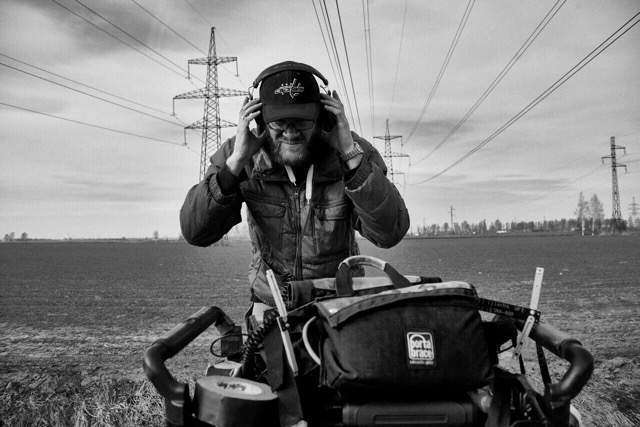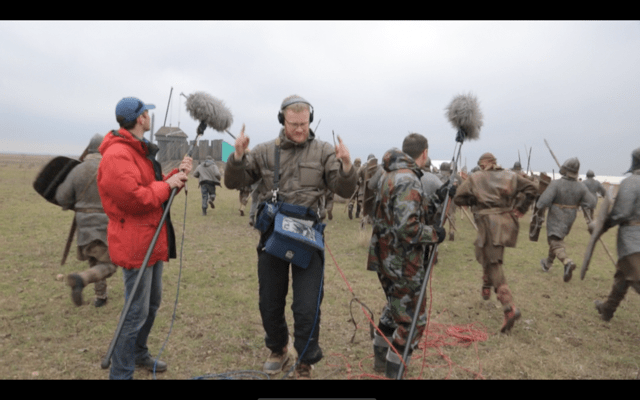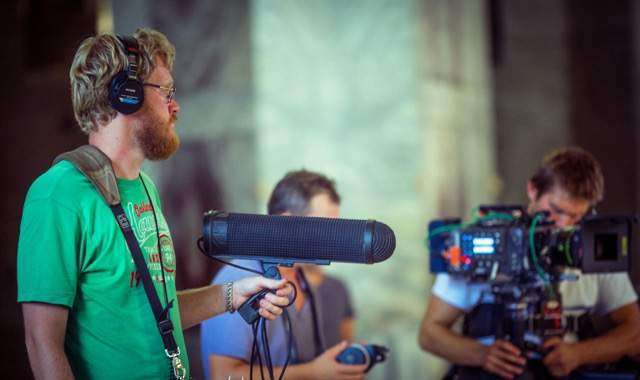
Grand cinema on an epic scale is easily comprehended when one sees it but what does it sound like? Pavel Iaroshenko knows. He’s been an essential component of manifesting the larger than life sound on such films as Viking (Golden Eagle Award Winner for Best Cinematography, Best Costume Design, Best Sound) and Stalingrad (Golden Eagle Award Winning for Best Sound, Best Cinematography, Best Art Direction & Nika Award Winning for Best Sound, Best Production Design, and Best Costume Design).
The Golden Eagle is Russia’s version of the Oscar Award, meaning that Pavel’s work has been a part of some of the most respected and popular films within the industry and among the public. The two aforementioned films take place in very different eras of war but their sonic presence is equally massive. Mr. Iaroshekno is unquestionably a master in building the personality of a film through his comprehension of how the mind processes sound.

What the past looks like is easy to believe when we see it on the screen with magnificent costumes and sets. These aesthetic marvels are created by incredibly skilled artists. A studio demands something of equal caliber in regards to the sound of a film whether it be the score, the dialogue, or the sound design. Stalingrad was the first Russian IMAX film, setting a precedent for the format and the studio creating it.
The action of this film begins in present day when Russian rescuers save German students in Japan from a Tsunami. One resquer calms a young girl by telling hee an epic tale about the most famous battle of WWII Russia. It’s a tale of huge armies of two countries in a test of wills. However, Viking is much smaller and more personal. It centers around the young Viking prince Vladimir of Novgorod who has fled the kingdom due to treachery on the part of his half-brother.
An elder warrior persuades Vlad to lead an army back to fight and regain his birthright. The military forces in both films are sizable but the battle tactics and armaments are vastly different, making the sound of each unique and critical to pulling the viewer into belief that they are witnessing melee from that specific era.

The siege of Kiev is the most breathtaking scene of Viking. An enormous battle with the crashing of swords, axes, and shields between infantry and cavalry; this is the anxiety apex of the film. As production sound mixer of Viking, Pavel wove a sound pattern of clashing weapons, voices, and overwhelming sounds of chaos.
He describes, “Besides the talent, I tried to record sound effects on the locations which would be recreated in studio. I recorded the falling of big wooden constructions, singing swords, metal and wooden hits, hooves of horses, big fires, and overall destruction. The battle scene itself was a mess of shouting warriors, weapons hits, and bursts of fire. This epic scene ended with rain, which was the salvation for the burning city in the story.”
Though the sounds are different, the emotion is similar in Stalingrad’s climactic scene where literally burning Russian soldiers engage their final attack on the German forces who have laid siege to the city for so long. In each film, the audience is consumed by the horror that is war. The emotional wave is all-consuming, thanks in no small part to the skilled expertise of Pavel Iaroshenko who places the audience inside the action. Movies which depict action on such a large scale require a masterful approach such as his to allow such a suspension of reality and sincerely transport the viewer to this specific time and situation.
Pavel exemplifies the epitome of a professional in the industry. He notes that each production he takes on begins with a dutiful learning of the script to understand not only when action and dialogue will occur but also how it should feel emotionally. The “big picture” includes the “big sound” in his approach.
He states, “I’ve feel a huge responsibility for the sound on set. I’m very strict with myself and my colleagues because my mantra is to make each take better than the previous one and to think of what I could do better in every setup. The costumes of the characters are challenging when you work on historical projects as they are very noisy because they’re made of materials which can squeak and be quite noisy.”
“However, I’m aware that nobody wants to hear that as an excuse. I always come prepared with a solution no matter what might come up. This has served me well and allowed me to work in an industry at a high level which is the achievement of a dream I’ve long held.”
Writer: Basil Thomson